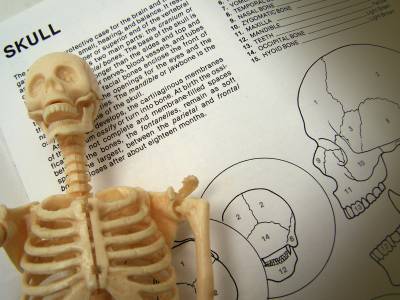It is pointed out that there is room for discussion because the precision of "radiocarbon dating" used in archeology varies depending on the place to be surveyed

byDr. _ Colleen _ Morgan
When historical materials such as ruins and fossils are discovered, dating is done in various ways to investigate when the material is around. When it is the remains of animals and plantsRadiocarbon datingScience journalist Mike McRae pointed out that scientific journalists may not correctly correct errors in data depending on the area to be investigated by recent research.
A Crucial Archaeological Dating Tool Is Wrong, And It Could Change History as We Know It
https://www.sciencealert.com/radiocarbon-dating-ancient-levant-region-calibration-inaccuracies
Carbon (C) present in the atmosphere contains radioactive isotopesC14There exists only slightly. This C14 performs a beta collapse with half-life of about 5730, and it becomes nitrogen (N). Because it also exists in the atmosphere of the natural world, C14 is taken in a certain proportion to living organisms, and as long as it is alive, the proportion of C14 in the body is maintained. However, when an organism dies, that is, when life activity is stopped, C14 is not taken in, so C14 in the body gradually decreases with beta collapse. Radiocarbon dating is to measure how much C14 is destroyed in a sample to determine when it is around.

The key to this radioactive carbon dating is the variation in the amount of C14 in the atmosphere. The amount of C14 in the atmosphere may change during long years, and errors will occur in the measurement results. Therefore, it is necessary to correct errors based on a chart called "calibration curve". This calibration curveINTCALA calibration curve made with an international project called "INTCAL" is used, and the calibration curve of INTCAL is periodically upgraded. It is the latest version as of June 2018INTCAL 13It is a calibration curve that enables accurate dating to about 50,000 years ago.

However, this INTCAL 13 basically is based on past data of North America and Europe, there is a claim that the correct age can not be measured because the proportion of radioactive carbon varies greatly depending on the region. Being an archaeologist at Cornell UniversityStart · ManningMr. Israel, South of Jordan, EgyptLevantWe investigated the annual rings of the southern tree and measured the ratio of C14 contained in the tree with the annual ring. As a result, at least data from 1610 to 1940 AD had an error of about 19 years with INTCAL 13 It is argued that it became clear.

Mr. Manning said, "Our findings show that there is room for discussion because the fundamental archaeologist's research has collapsed, at least not at Levant, we do radiocarbon dating at least not accurate I will be there. "
Levant isBible archeologyIt is an area subject to the survey, still controversial about the age of excavated goods and materials still. In archeology dealing with things of thousands of years ago, the error of 19 years seems to be small, but it has started from radioactive carbon datingThe age of the kingdom of DavidMr. McRae says the discussion about the problem will help resolve it.
Related Posts:
in Science, Posted by log1i_yk







